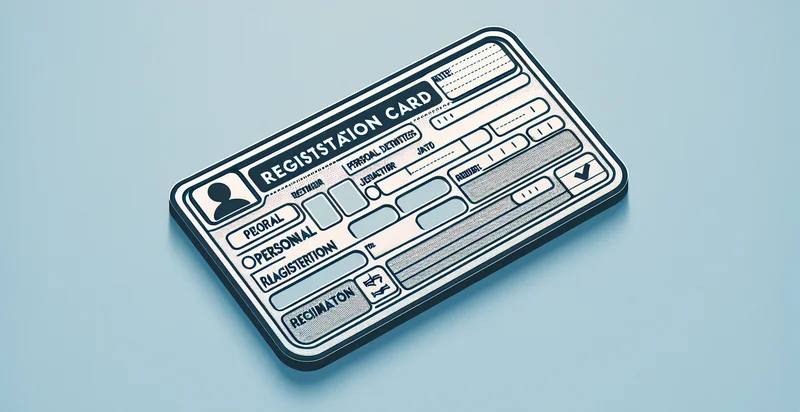Identify registration status
using AI
Below is a free classifier to identify registration status. Just input your text, and our AI will predict if the registration is complete - in just seconds.

Contact us for API access
Or, use Nyckel to build highly-accurate custom classifiers in just minutes. No PhD required.
Get started
import nyckel
credentials = nyckel.Credentials("YOUR_CLIENT_ID", "YOUR_CLIENT_SECRET")
nyckel.invoke("registration-status", "your_text_here", credentials)
fetch('https://www.nyckel.com/v1/functions/registration-status/invoke', {
method: 'POST',
headers: {
'Authorization': 'Bearer ' + 'YOUR_BEARER_TOKEN',
'Content-Type': 'application/json',
},
body: JSON.stringify(
{"data": "your_text_here"}
)
})
.then(response => response.json())
.then(data => console.log(data));
curl -X POST \
-H "Content-Type: application/json" \
-H "Authorization: Bearer YOUR_BEARER_TOKEN" \
-d '{"data": "your_text_here"}' \
https://www.nyckel.com/v1/functions/registration-status/invoke
How this classifier works
To start, input the text that you'd like analyzed. Our AI tool will then predict if the registration is complete.
This pretrained text model uses a Nyckel-created dataset and has 2 labels, including Registered and Unregistered.
We'll also show a confidence score (the higher the number, the more confident the AI model is around if the registration is complete).
Whether you're just curious or building registration status detection into your application, we hope our classifier proves helpful.
Related Classifiers
Need to identify registration status at scale?
Get API or Zapier access to this classifier for free. It's perfect for:
- Customer Onboarding: This use case involves classifying potential customers based on their registration status to streamline the onboarding process. By automatically categorizing users as "registered," "pending," or "unregistered," businesses can tailor their communications and support accordingly.
- Marketing Campaign Segmentation: Companies can use the registration status identifier to segment their target audience for marketing campaigns. By understanding the status of each lead, marketing teams can deliver personalized messages that encourage conversions, such as targeted emails for pending or unregistered users.
- User Experience Optimization: This function can help improve user experiences on platforms by identifying registration status during navigation. By offering customized prompts or assistance to unregistered users or tips for completing registration, businesses can enhance engagement and reduce bounce rates.
- Analytics and Reporting: Organizations can leverage this classification to generate reports on registration trends and user engagement. By analyzing the data, businesses can identify bottlenecks in the registration process and implement improvements to increase completion rates.
- Support Ticket Prioritization: Customer support teams can use registration status to prioritize inquiries based on user classification. Registered users may receive faster responses, while unregistered or pending users could be directed to automated resources, creating a more efficient support workflow.
- Fraud Detection: The registration status identifier can play a vital role in fraud prevention by flagging suspicious activity tied to unregistered or pending users. By monitoring registration behavior and correlating it with usage patterns, businesses can enhance their security measures and reduce risks.
- A/B Testing for Registration Processes: Businesses can conduct A/B testing by segmenting users based on their registration status. This allows for analyzing the effectiveness of different registration processes and tailoring strategies to optimize user conversions from unregistered to registered status.


